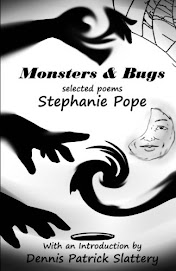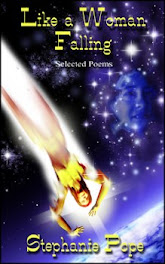 |
| Fairy Talking To A Boy -John Bauer, public domain image |
WHEN CREATIVE EMOTION IS
UTTERED LOGOS FLOWS
"As goods are for gold and gold for goods" -Hereclitus, Fragment 90
“there
is no consistent pattern
no sound explanation”[1]
“the bed of sound
no sound explanation”[1]
“the bed of sound
lover absconditus”[2]
say
howdy do-doo
a ditty
before word meanings
a creation of sounds
the soundness
of the impossible
lake[3]
bend low and listen
for early movements
before word meanings
a creation of sounds
the soundness
of the impossible
lake[3]
bend low and listen
for early movements
stirring the sleepless
metaphoric heart living in verse
inverse and verseless […]
invisibly & without thinking―give
[self] utterance to it alone
©2016 March & Mad, Selfless Act stephaniepope mythopoetry.com
notes
1. For more on the language of wee folk or fairies see https://aspcwf.wordpress.com/2012/09/15/languages-of-wee-folk/ Here is one passage from the blog...
metaphoric heart living in verse
inverse and verseless […]
invisibly & without thinking―give
[self] utterance to it alone
©2016 March & Mad, Selfless Act stephaniepope mythopoetry.com
notes
1. For more on the language of wee folk or fairies see https://aspcwf.wordpress.com/2012/09/15/languages-of-wee-folk/ Here is one passage from the blog...
“Wee Folk use more languages than human beings. Almost any human language has at least some Wee Folk who speak it, and in addition, they have thousands of languages of their own. Nevertheless, nearly all of them can communicate with nearly all others, and the lack of common language is no barrier. The reason for this is that their primary method of communication is by telepathy, instead of, or in addition to, speaking.
Because they use telepathy so heavily, their
spoken languages tend to be very simple. In fact, an example of an especially
simple language of Wee Folk might consist entirely of words we might identify
as nouns. A sentence in such language is simply a set of nouns strung together…
so [the wee] could say something in the telepathic portion of the message
having a meaning the words do not even hint at.”
Keep in mind "the symbolic pull of wordless languages" have “logical” soul and cause a long term effect such as that between the goose and man.
2. The poem is part of an exchange between poets Richard Lance Scow Williams & d. knape.
3. Regarding the pull that symbols can have on the mind see British ornithologist E. A. Armstrong, “The Symbolism of the Swan and the Goose” pp. 54-58. He notes, “The grey lag goslings are so constituted that they become attached to, or in psychological language “fixed” upon, the first large moving creature that they see when they hatch…. They will follow a man if he happens upon them before they catch sight of a parent. So strong is the resulting attachment that they henceforth prefer human society to that of their own kind.”
Keep in mind "the symbolic pull of wordless languages" have “logical” soul and cause a long term effect such as that between the goose and man.
2. The poem is part of an exchange between poets Richard Lance Scow Williams & d. knape.
3. Regarding the pull that symbols can have on the mind see British ornithologist E. A. Armstrong, “The Symbolism of the Swan and the Goose” pp. 54-58. He notes, “The grey lag goslings are so constituted that they become attached to, or in psychological language “fixed” upon, the first large moving creature that they see when they hatch…. They will follow a man if he happens upon them before they catch sight of a parent. So strong is the resulting attachment that they henceforth prefer human society to that of their own kind.”








